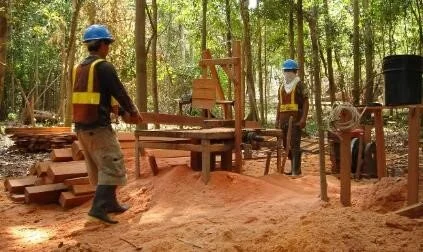
We seek out partners and projects that go above and beyond.
The advantage of Zerofootprint is the depth of investigation and due diligence we invest in project selection.
Zerofootprint works with carbon market partners who independently assess a wide range of global carbon offset standards.
Only those standards that pass this independent assessment are approved for use and incorporate the following elements in their due diligence selection criteria.
Project Fundamentals
Robust approach to additionality, permanence and leakage.
Transparency
Transparent process for methodology development and public comment.
No Double Counting
Robust approach to ensure no double-counting or claiming of carbon credits.
Co-Benefits
Ensure projects deliver social, economic and other environmental benefits.
Assurance
Independent project-level assurance by qualified auditors.
Conservativeness
Carbon offsets are accurately and conservatively measured
Approved carbon standards
For sustainable development it is crucial to harmonize three core elements: economic growth, social inclusion and environmental protection.
Our projects contribute to the United Nations’ Sustainable Development Goals.

Projects
CORDILLERA AZUL NATIONAL PARK
Peru, South America
2.5 MILLION CARBON CREDITS GENERATED on average each year
IMPACT TARGETS FOR 2021
2.5 million carbon credits generated on average each year
1.6 million hectares of threatened forest protected
28 high conservation value species protected
716 jobs supported, 30% of which are held by women
25 sustainable enterprises created or supported
Produces sustainable commodities including Fair Trade and organic cacao and coffee
Helped 6 communities to improve their schools, benefiting 5,000 people
DEVELOPED BY Centro de Conservación, Investigación y Manejo de áreas Protegidas (CIMA)
The Cordillera Azul National Park is located in Peru’s high forest between the Andes and the Amazon Basin. The project supports a rich ecosystem of indigenous biodiversity, high-carbon stock forests and a multicultural population of more than 250,000 people living in communities around the park boundaries. The project protects against illegal logging and the encroachment by farmers.
The project restores degraded lands with agroforestry systems (cacao and coffee) which provides income for local communities. The project also protects the unique biodiversity of the area which is home to around 6,000 plant species and more than 180 species of fish.
Commitment to United Nations’ Sustainable Development Goals (SDG)
The project contributes to the following SDGs:
Tambopata-Bahuaja Biodiversity Reserve
400,000 CARBON CREDITS GENERATED on average each year
IMPACT TARGETS FOR 2021
400,000 carbon credits generated on average each year
591,119 hectares of natural forest protected
4,000 hectares of degraded land recovered and regenerated as sustainable cacao production
30 high conservation value species protected
3 indigenous communities work with the project
632 smallholder cacao production jobs supported
DEVELOPED BY Asociación para la Investigación y el Desarrollo Integral (AIDER)
The project combines the Tambopata National Reserve, the Bahuaja-Sonene National Park and 4,000 hectares of degraded land in a buffer zone around the parks, in the Madre de Dios region in Peru. The area is threatened by land conversion and degradation from unsustainable farming techniques and illegal mining. The project restores the buffer zone through improving agroforestry systems which aim to produce ‘deforestation free’ cacao.
The areas covered by the project are among the most biologically diverse ecosystems in the world and provide essential ecosystem services, such as water and carbon sequestration. The project provides financial support to improve agricultural practices and to equip local communities with the tools they need to monitor and manage the protected areas themselves.
Commitment to United Nations’ Sustainable Development Goals (SDG)
The project contributes to the following SDGs:











